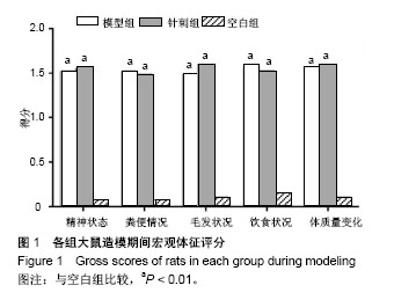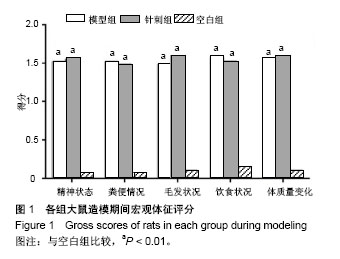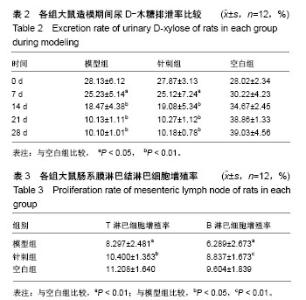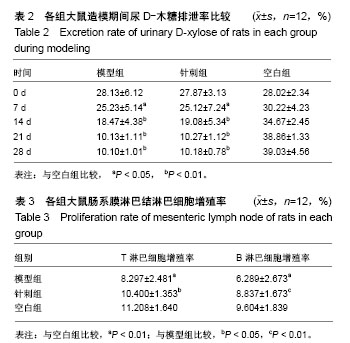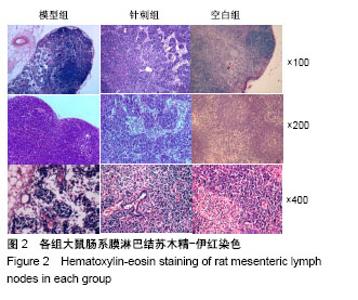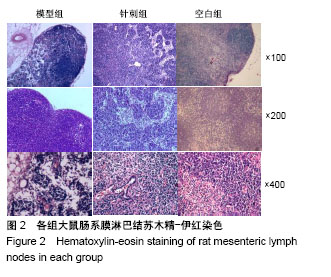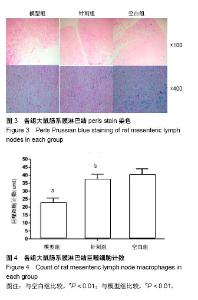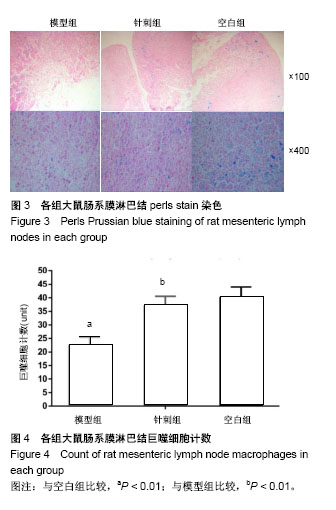| [1] 施茵,吴焕淦.足三里穴在免疫功能调节中的应用[J].现代中医药, 2003,2(3):3-6.[2] 陈玉龙,符仁,刘紫阳,等.脾虚证发生率研究[J].光明中医, 2012,27(3): 614-615.[3] 陈玉龙,符仁,刘学俊,等.脾虚证症状规律的文献研究[J].中医学报, 2013,28(1):150-152.[4] 陈小野,邹世洁. 脾气虚证多态性的初步探讨[J].中医杂志, 1996, 30(2):113-116.[5] 熊斌,钱会南. 中医脾虚证与免疫功能关系研究进展[J].湖北中医杂志, 2013,35(6):76-78.[6] 逄紫千,李秋明,袁洪平. 针灸对脾虚证肠道局部免疫的作用机制[J].长春中医药大学学报,2007,23(2):84-85.[7] 叶芳旭,徐芳,张烁. 由“气血津液”学说浅析脾虚证对胃肠免疫功能的影响[J]. 浙江中西医结合杂志,2017,27(9):808-810.[8] 王为,周国华. 肠道相关淋巴样组织与肠道黏膜免疫[J].实用医学杂志, 2009,25(21):3720-3722.[9] 卓缘圆,吴家满,叶鑫璇,等. 针灸治疗脾虚证概况[J].针灸临床杂志, 2012,28(1):66-68.[10] 张彩云,肖满珊,廖双叶,等.实验性大鼠脾气虚证模型的建立及指标检测[J]. 广东药学院学报,2015,31(6):808-810.[11] 陈雷,李德新,崔家鹏,王彩霞.用模糊数学中模式识别方法进行脾气虚大鼠模型评价的实验研究[J].中国中医基础医学杂志, 2006, 12(2):118-120.[12] 张声生,胡玲,李茹柳. 脾虚证中医诊疗专家共识意见(2017)[J].中医杂志, 2017,58(17):1525-1530.[13] 陈贵廷. 中医虚证辨证标准的客观化问题[J].中国中西医结合杂志, 1983.3(2):73-76.[14] 修宗昌,余绍源,黄穗平. 脾虚证临床诊断标准浅识[J].中华中医药学刊, 2003,21(2):219-220.[15] 李灿,张海艇,陈玉龙. 采用唾液淀粉酶和D-木糖排泄率对利血平脾虚证模型的评价研究[J]. 中国中医基础医学杂志, 2011,17(7): 746-748.[16] 高小玲,郭文峰,李茹柳,等. 四君子汤对脾虚大鼠尿木糖排泄率及肠黏膜ATP的影响[J]. 中药材,2009,32(8):1242-1245.[17] 李忠仁,方剑乔,易受乡,等. 实验针灸学[M].北京:中国中医药出版社. 2003:327-329.[18] 田阳春,郑玲,袁英,等.不同深度针刺足三里穴对健康大鼠外周血细胞形态数量及淋巴细胞增殖能力和胸腺指数的影响[J].中国组织工程研究, 2008,12(29):5687-5690.[19] 李斌,侯伟龙,王彩霞,等. 脾虚动物水液代谢特征研究[J].辽宁中医杂志, 2016,43(31):150-153.[20] 赵彬. 艾灸对脾虚泄泻大鼠尿D-木糖排泄率和唾液淀粉酶分泌的影响[D]. 沈阳:辽宁中医药大学,2014.[21] 何裕隆,王亮. 淋巴结组织结构与功能及胃癌淋巴转移的组织学基础[J]. 消化肿瘤杂志(电子版),2014,6(1):51-56.[22] 韩振民,谢遵江,崔宏波,等.小鼠肠系膜淋巴结在黏膜免疫应答中的形态学观察[J]. 哈尔滨医科大学学报,2003,37(2):131-132.[23] 王文波,谢湘峰,程艳荣. 脾虚证胃肠粘膜屏障保护功能的研究集要[J]. 中华中医药学刊,2002,20(4):504.[24] 王富春,逄紫千. 针灸天枢穴对脾虚泄泻大鼠肠道功能影响的实验研究[J]. 长春中医药大学学报,2005,21(1):52-54.[25] Brandtzaeg P.The secretory immunoglobulin system: regulation and biological significance. Focusing on human mammary glands. Adv Exp Med Biol. 2002;503:1-16.[26] Hart AL, Lammers K, Brigidi P,et al.Modulation of human dendritic cell phenotype and function by probiotic bacteria.Gut. 2004;53(11): 1602-1609.[27] 于茜楠,陈以国.针灸对固有免疫双向调节研究简况[J].实用中医内科杂志,2015,29(3):137-139.[28] 杨丽霞. 针刺调节慢性疲劳大鼠神经-免疫功能的研究[D]. 广州:广州中医药大学,2007.[29] 余安胜,赵英侠. 足三里穴的显微结构[J]. 中国针灸,1999,2(1): 27-28. |
